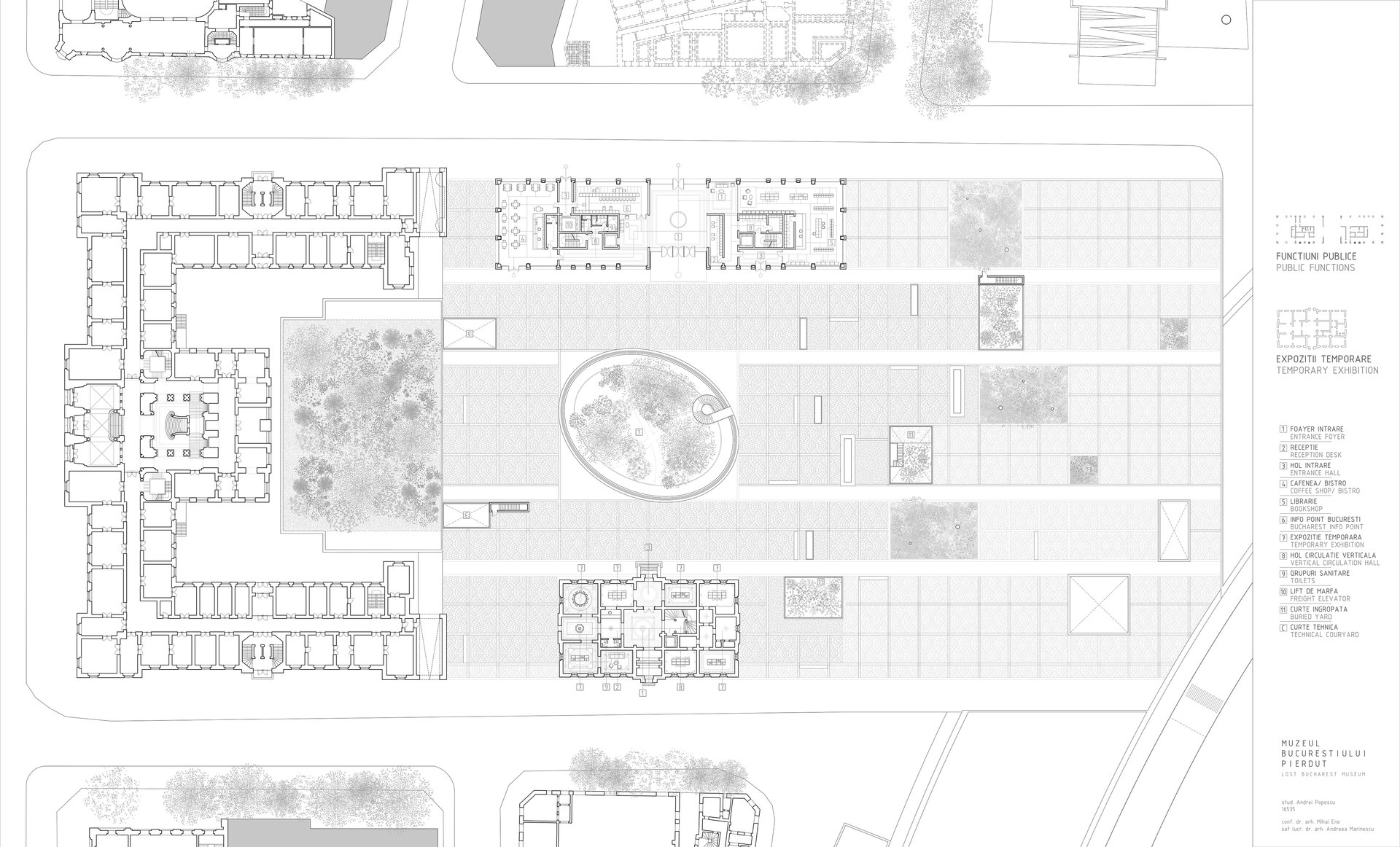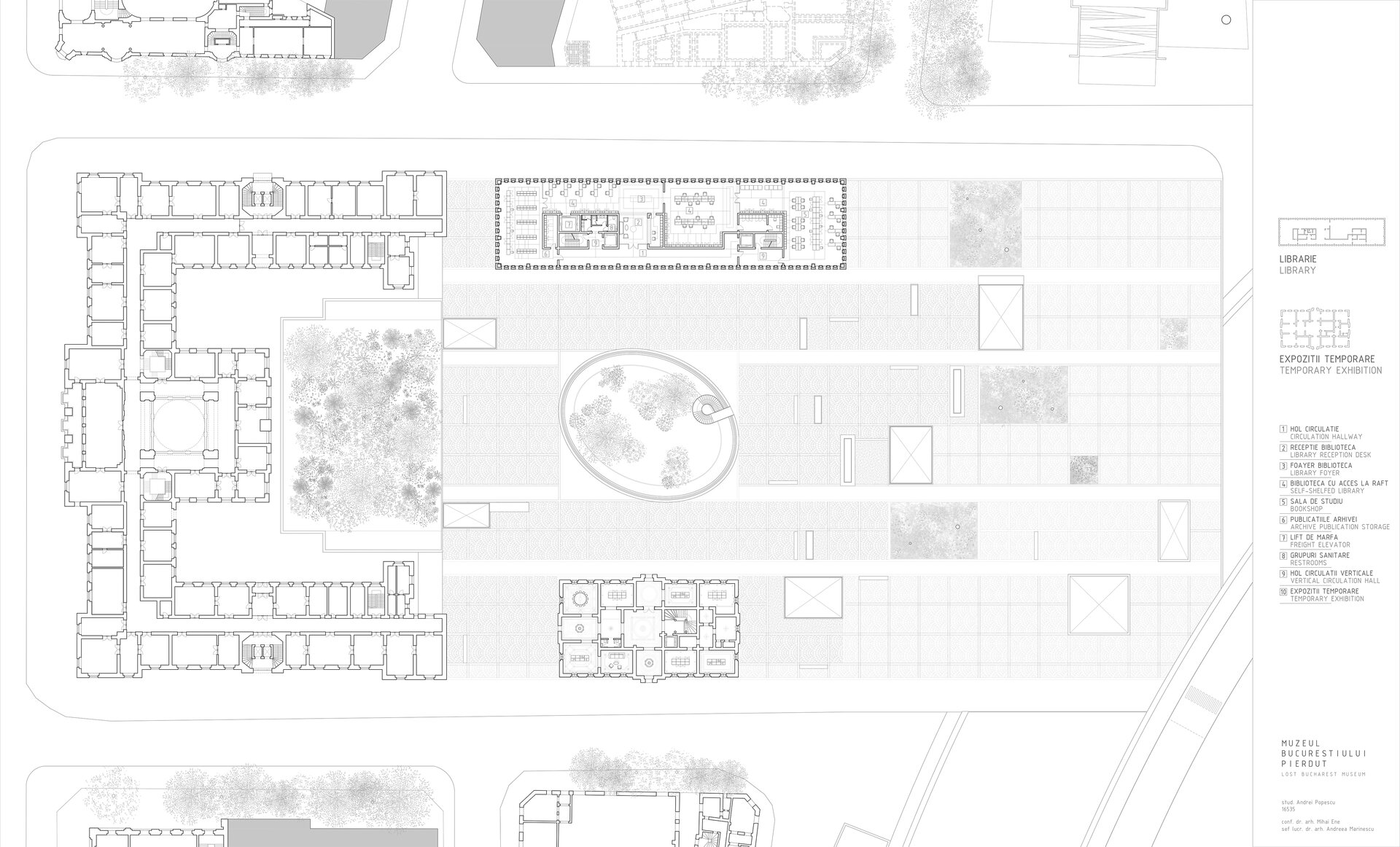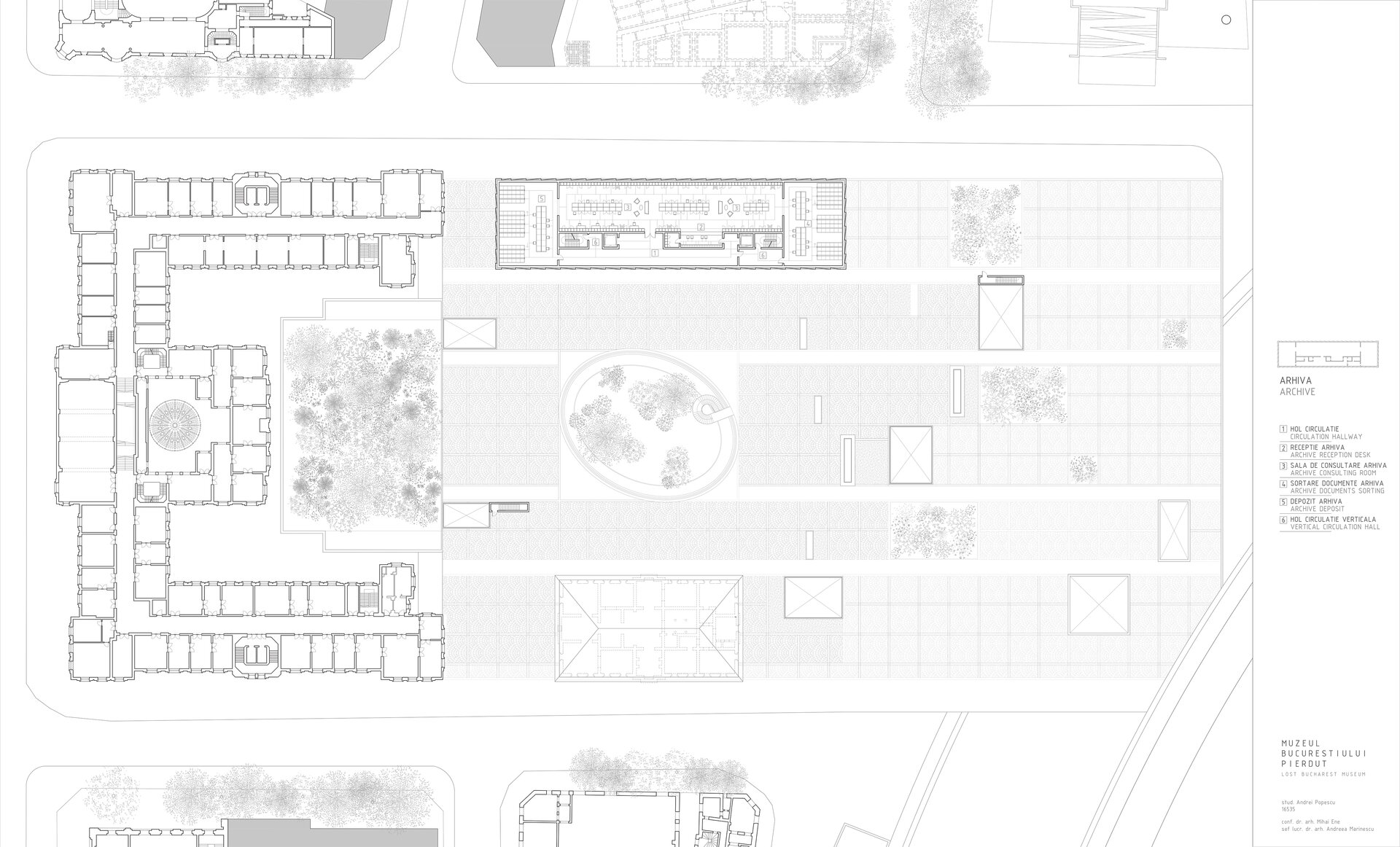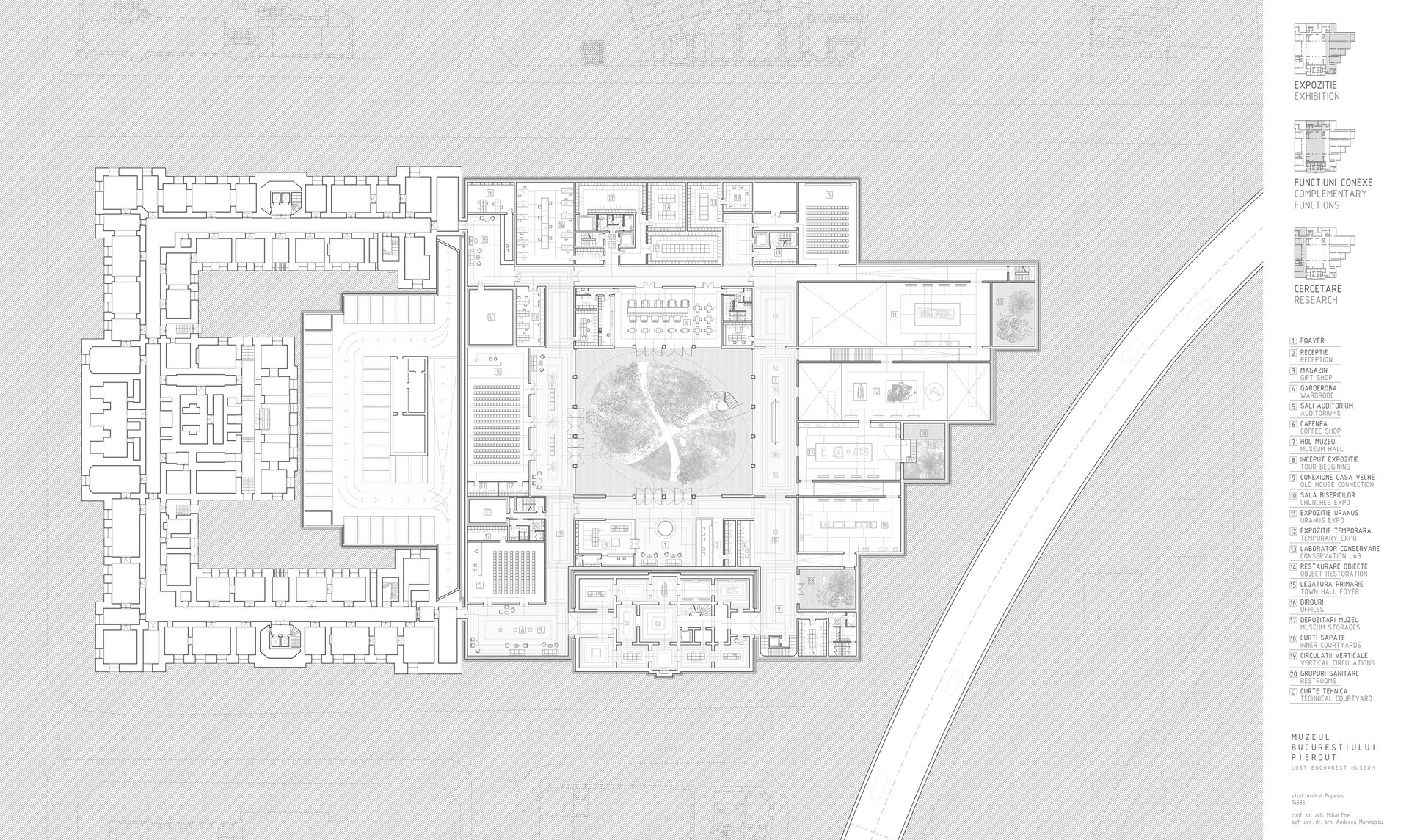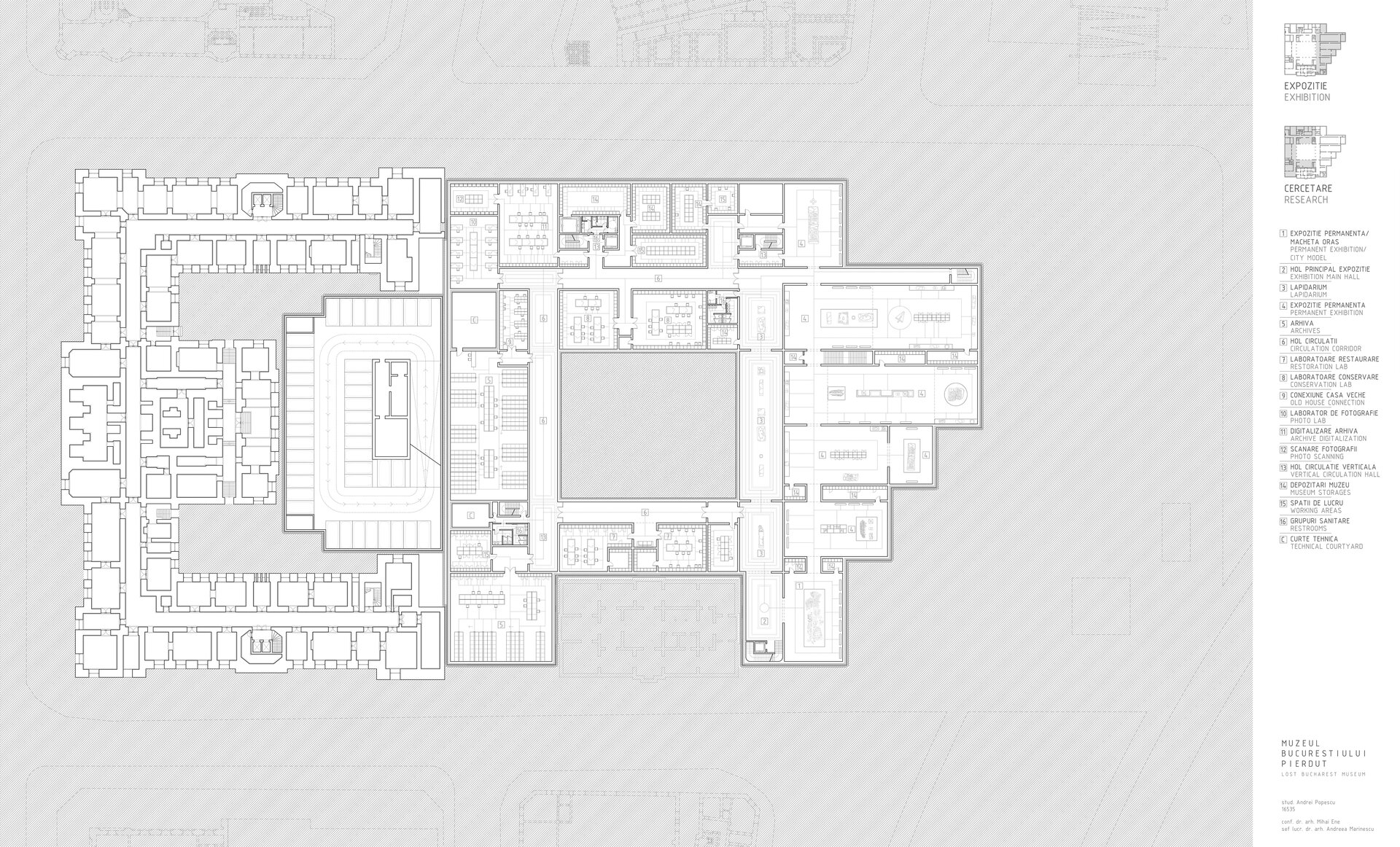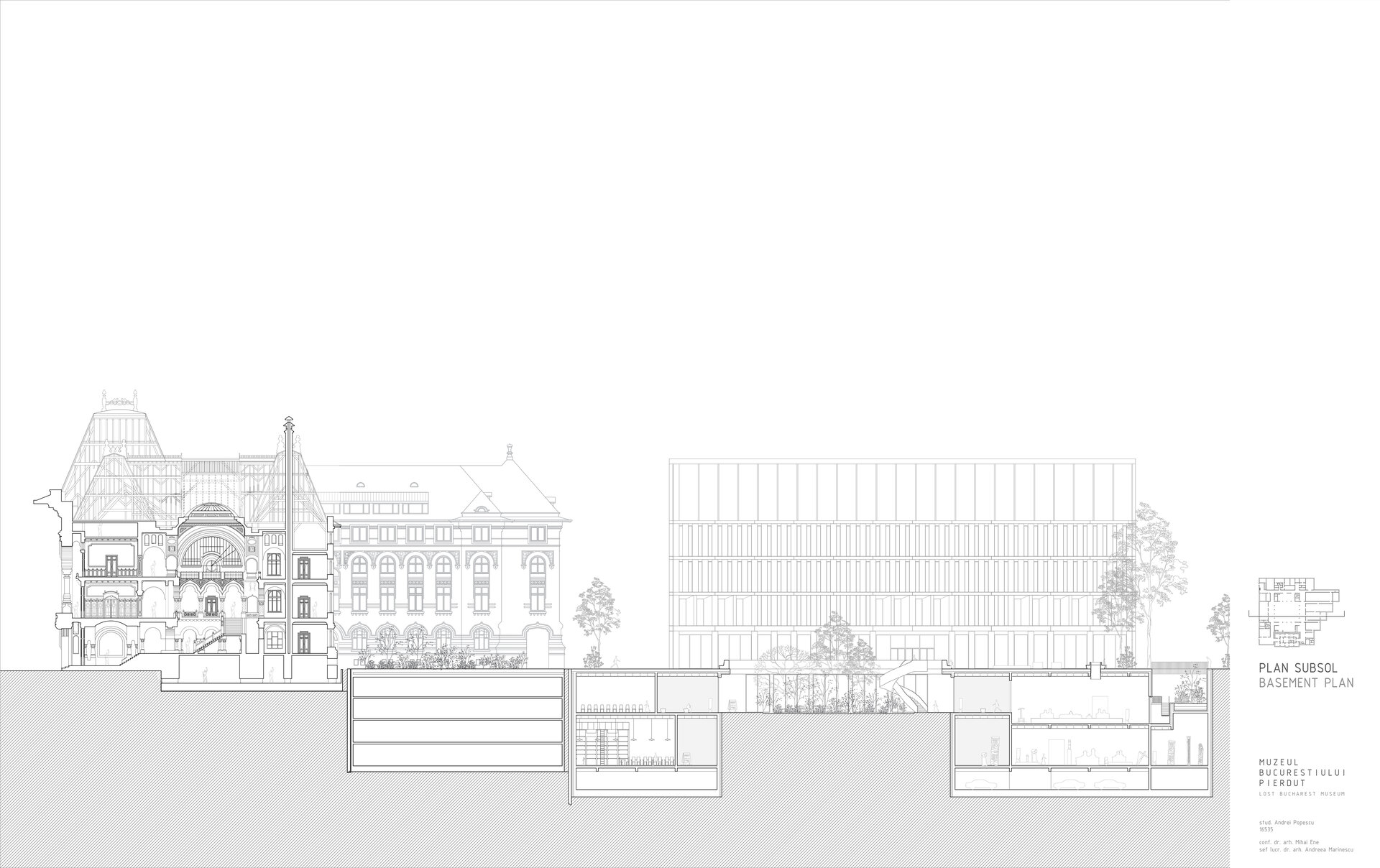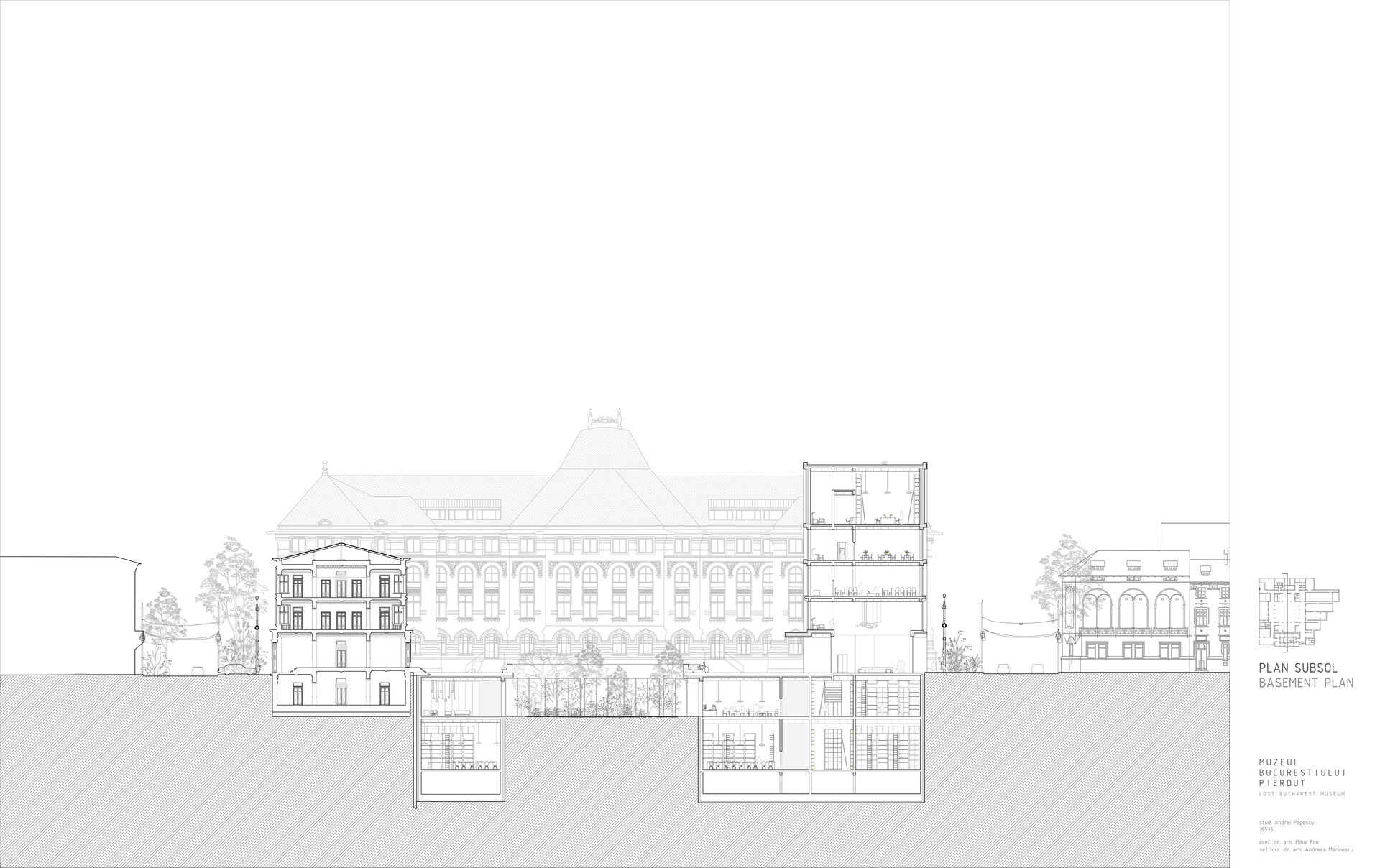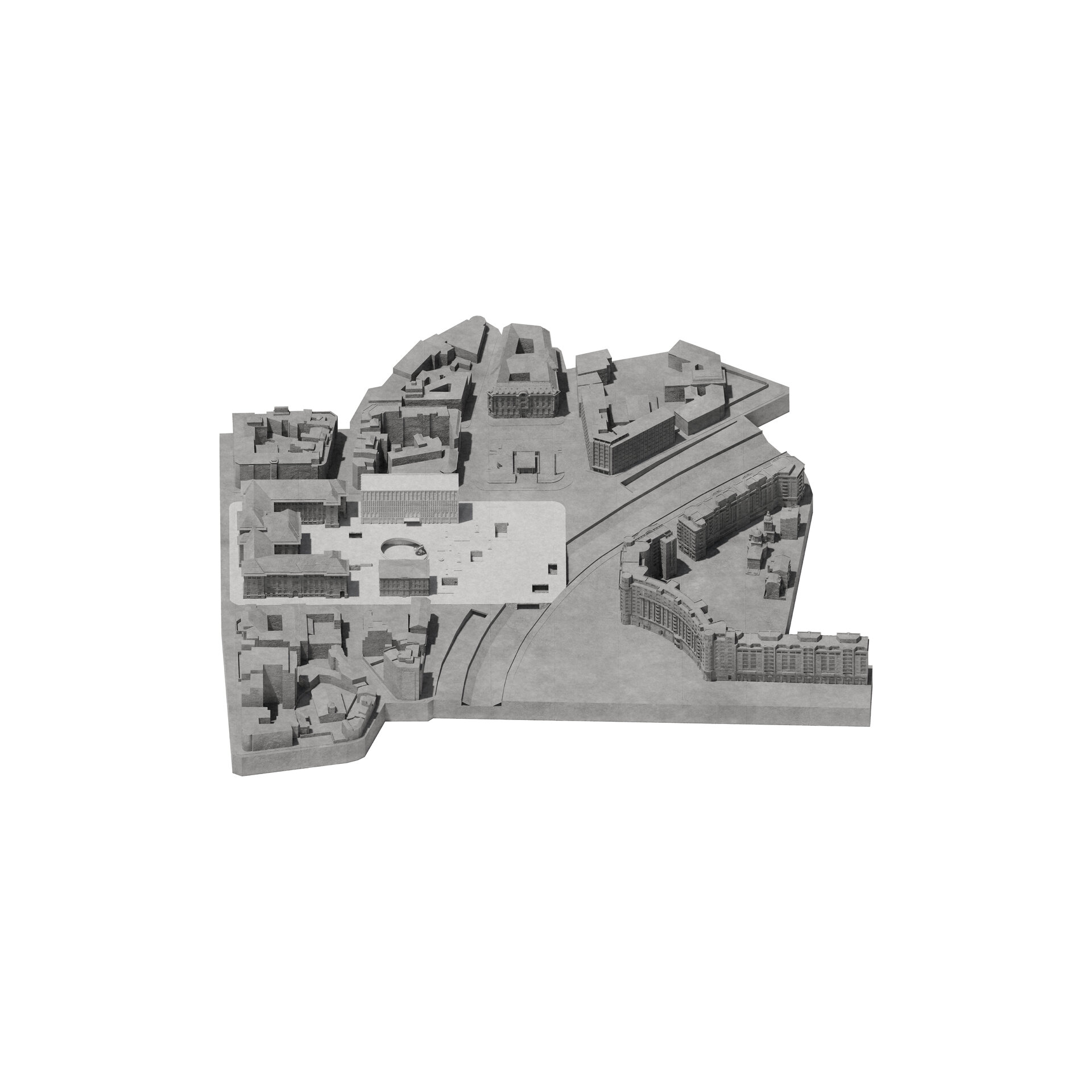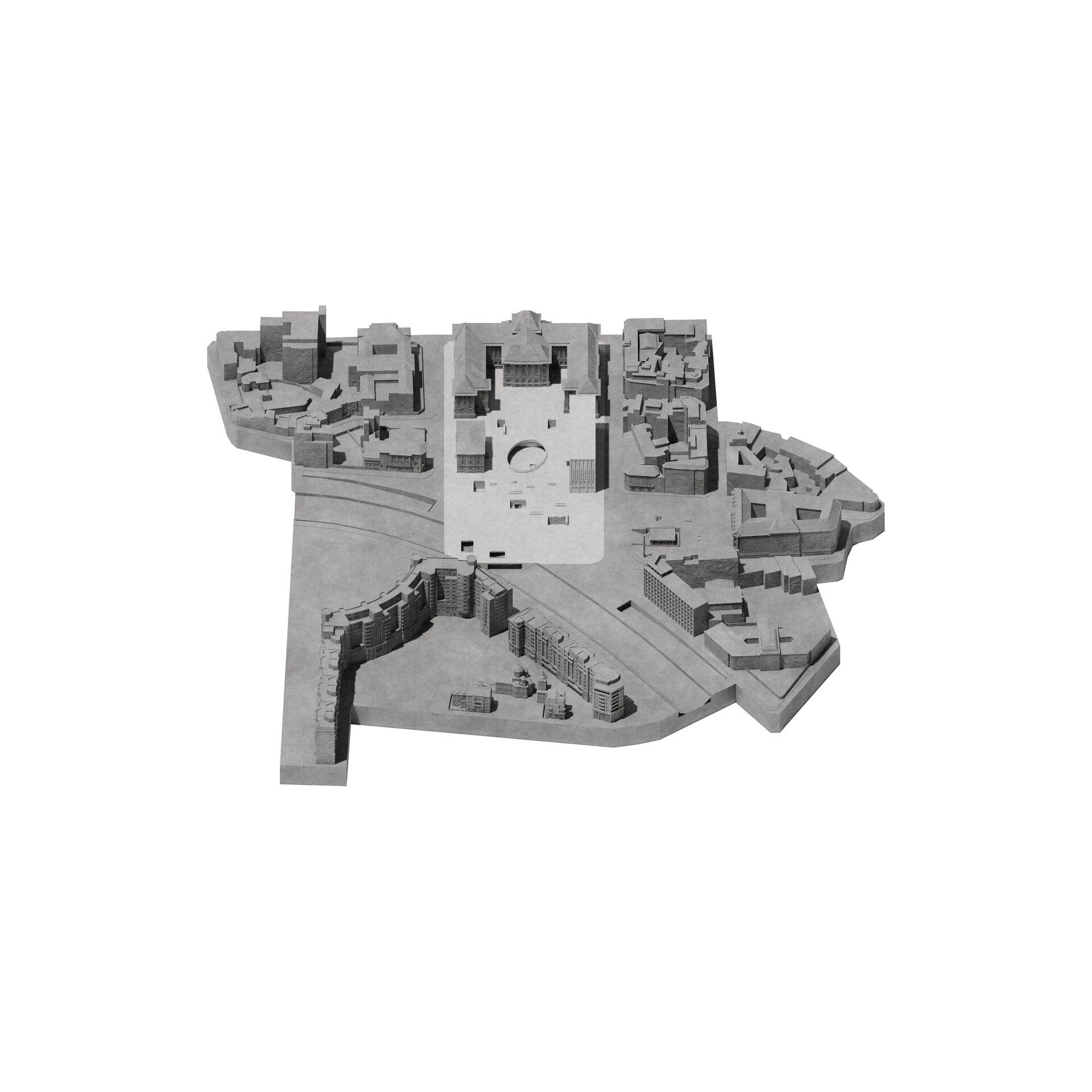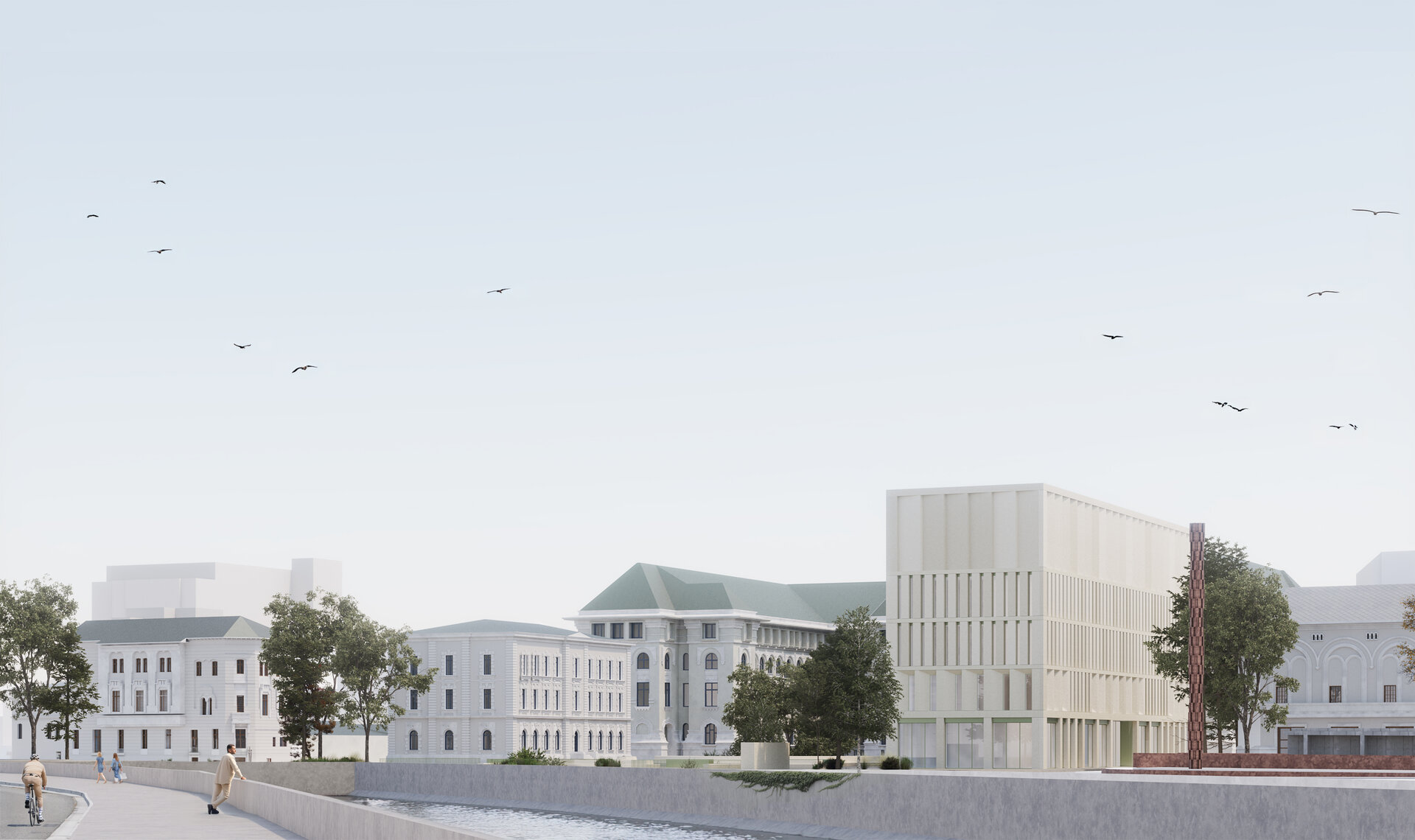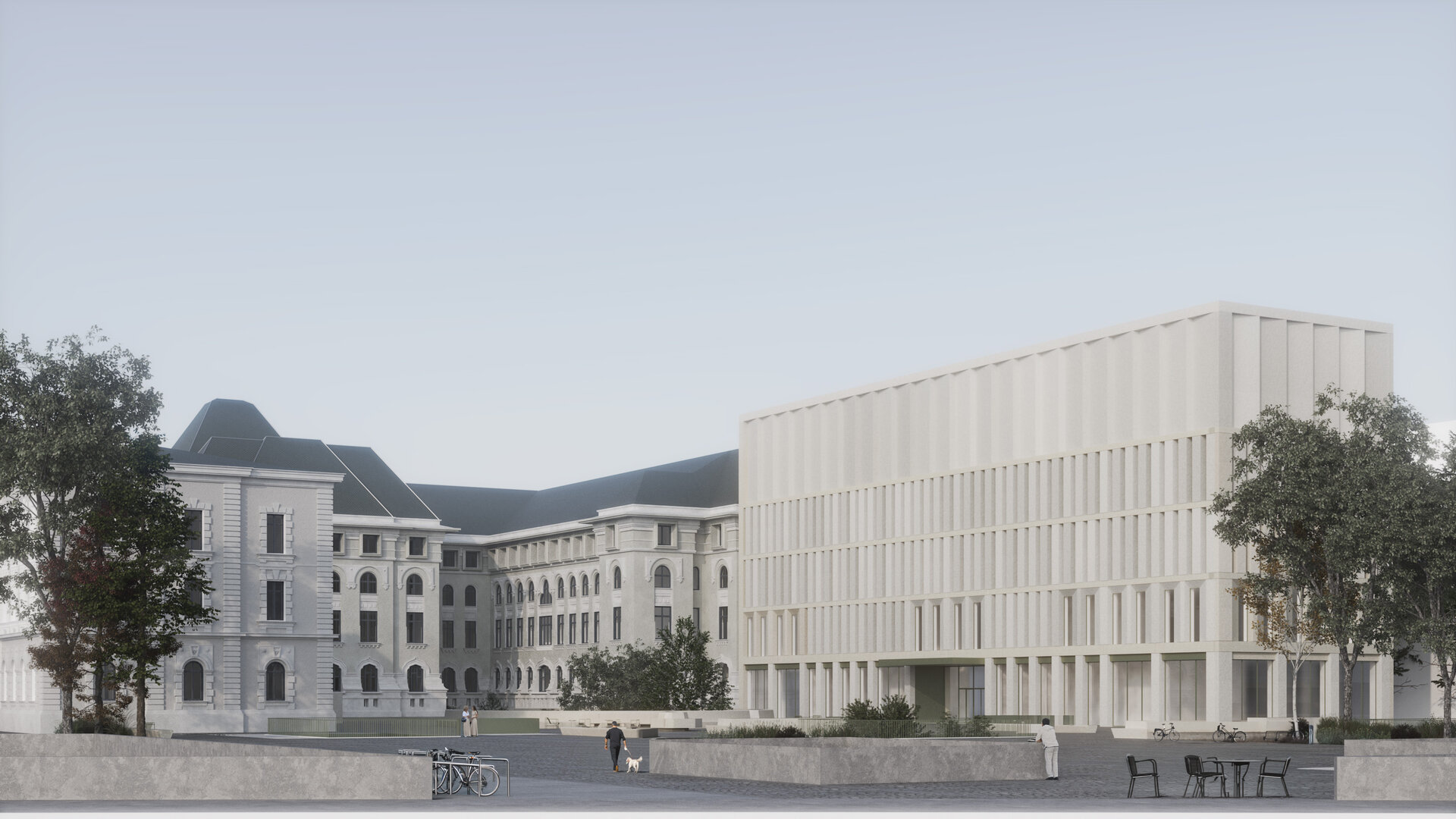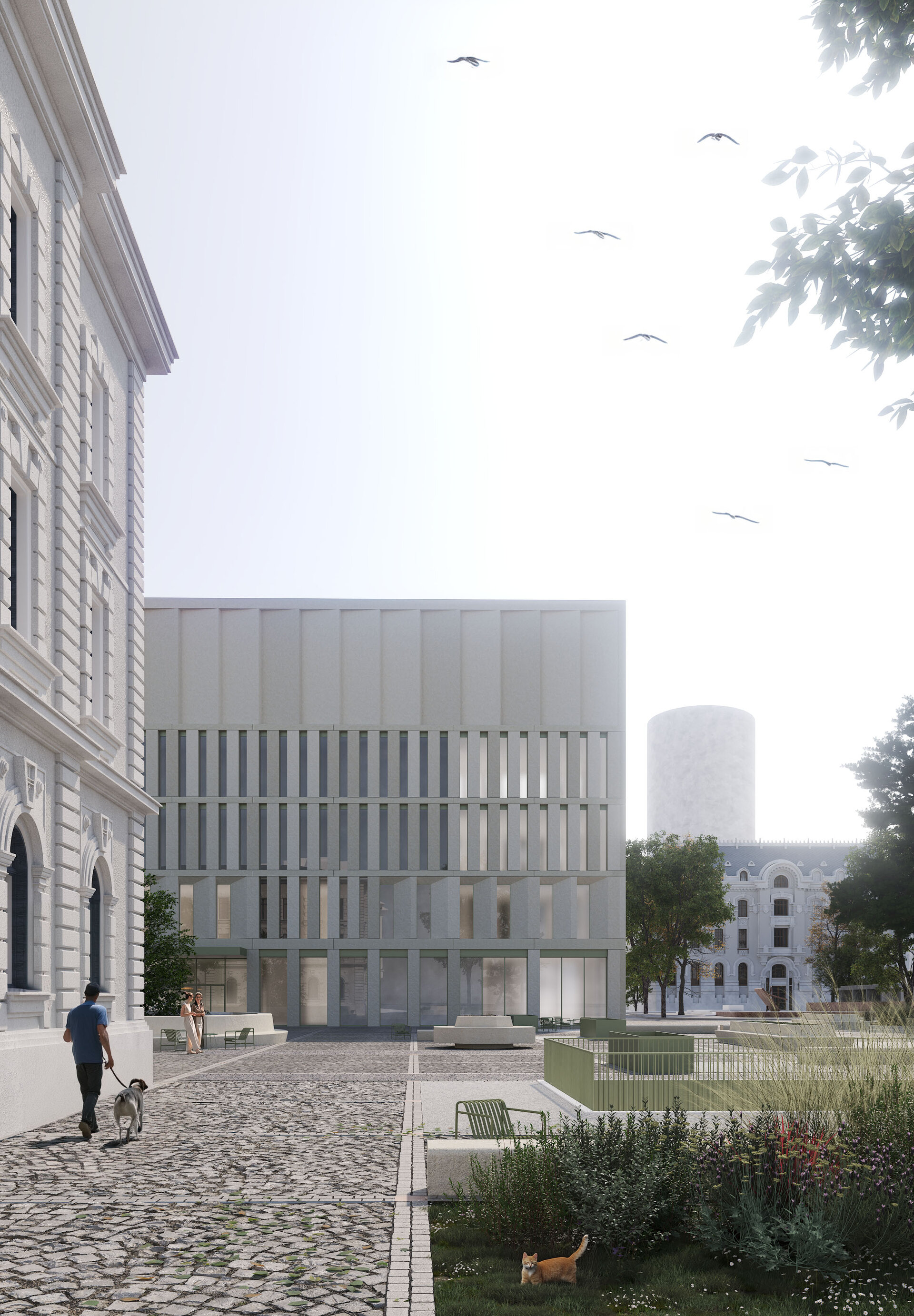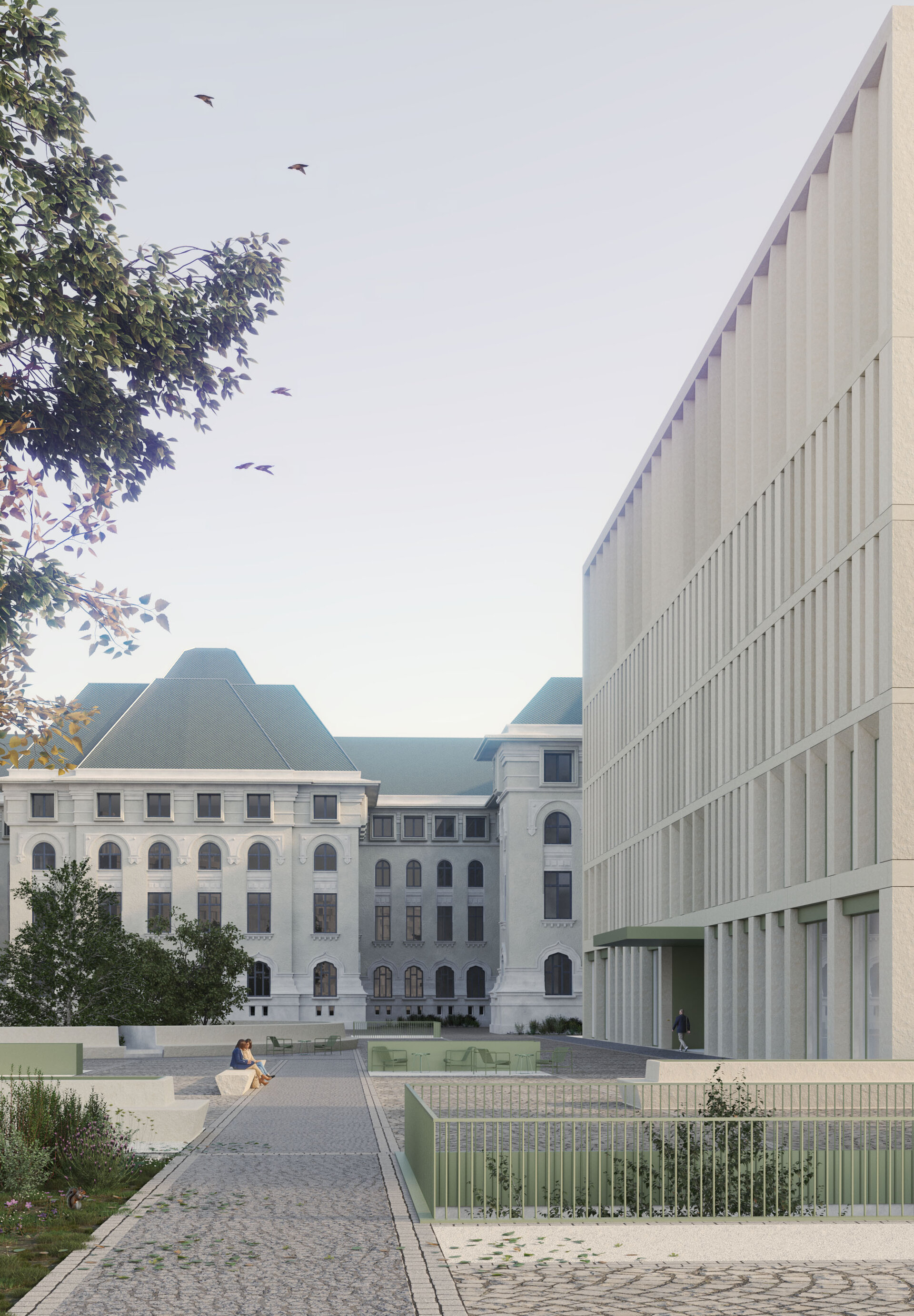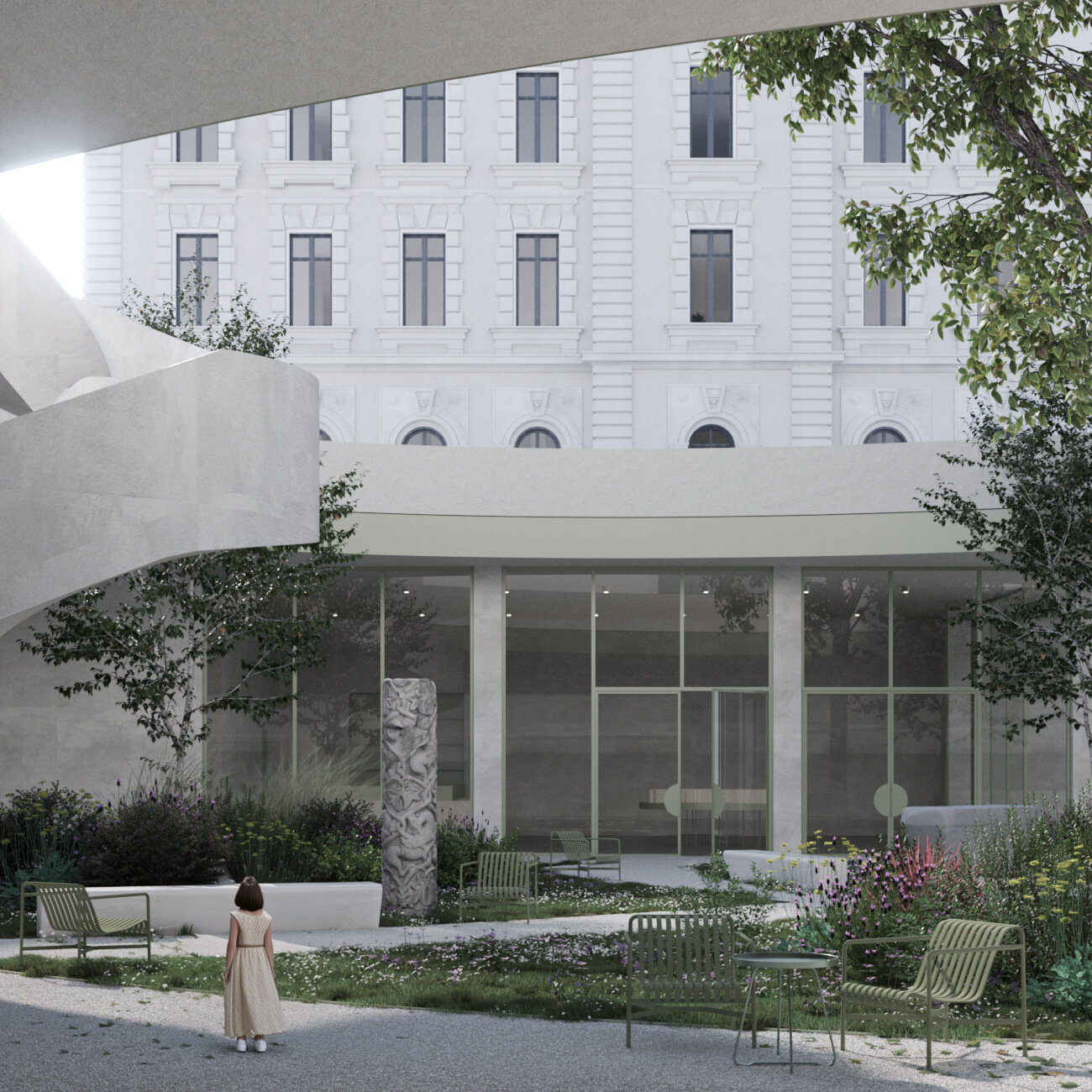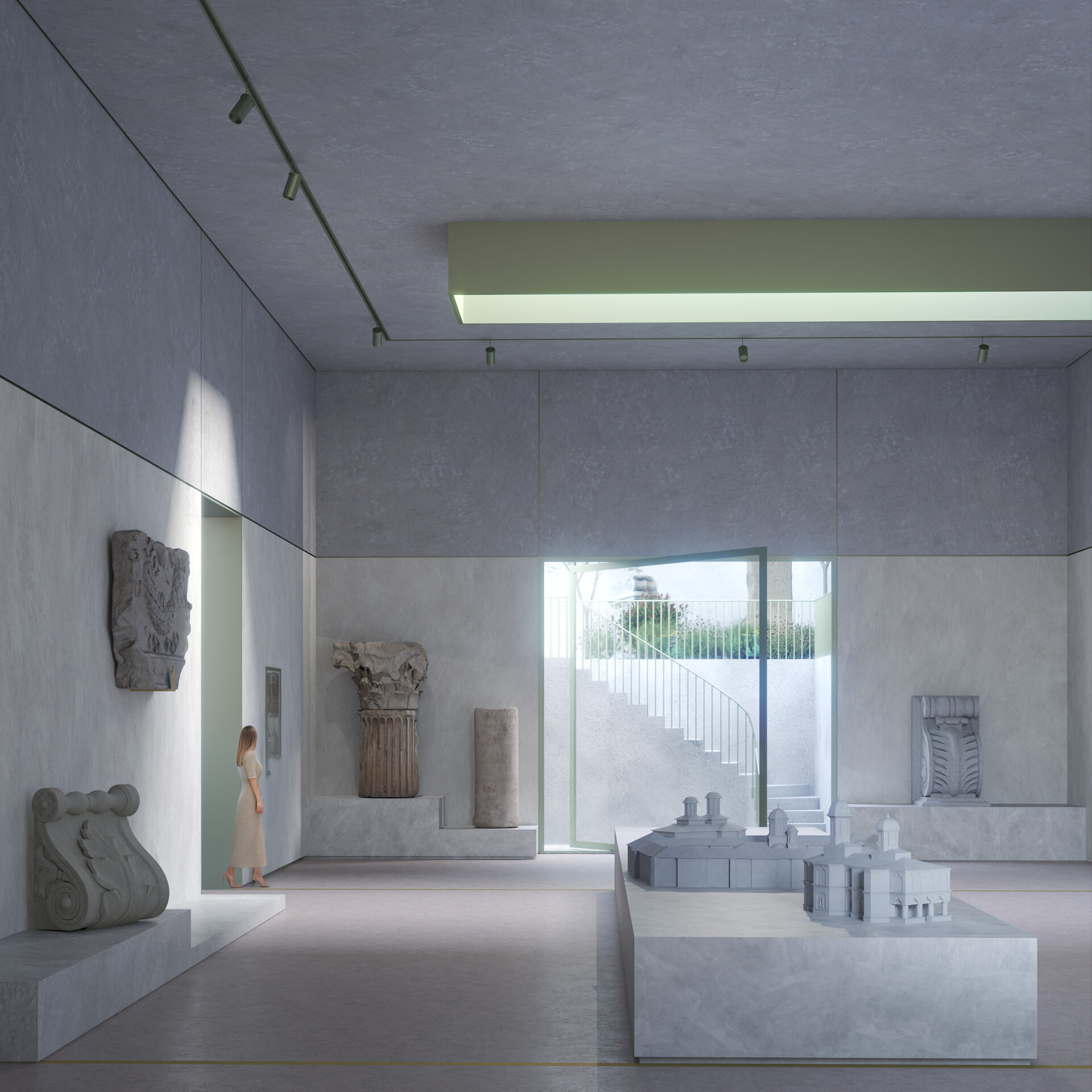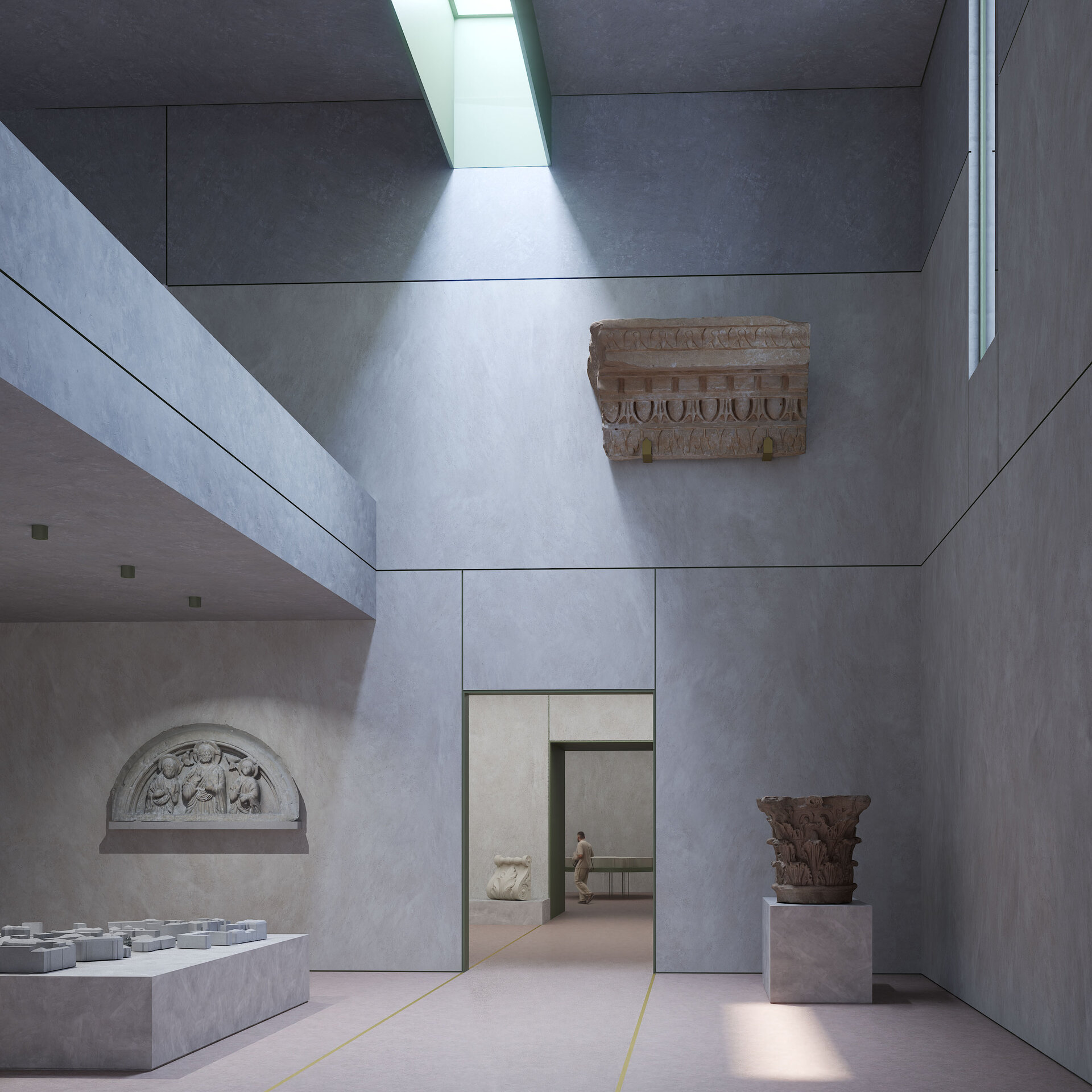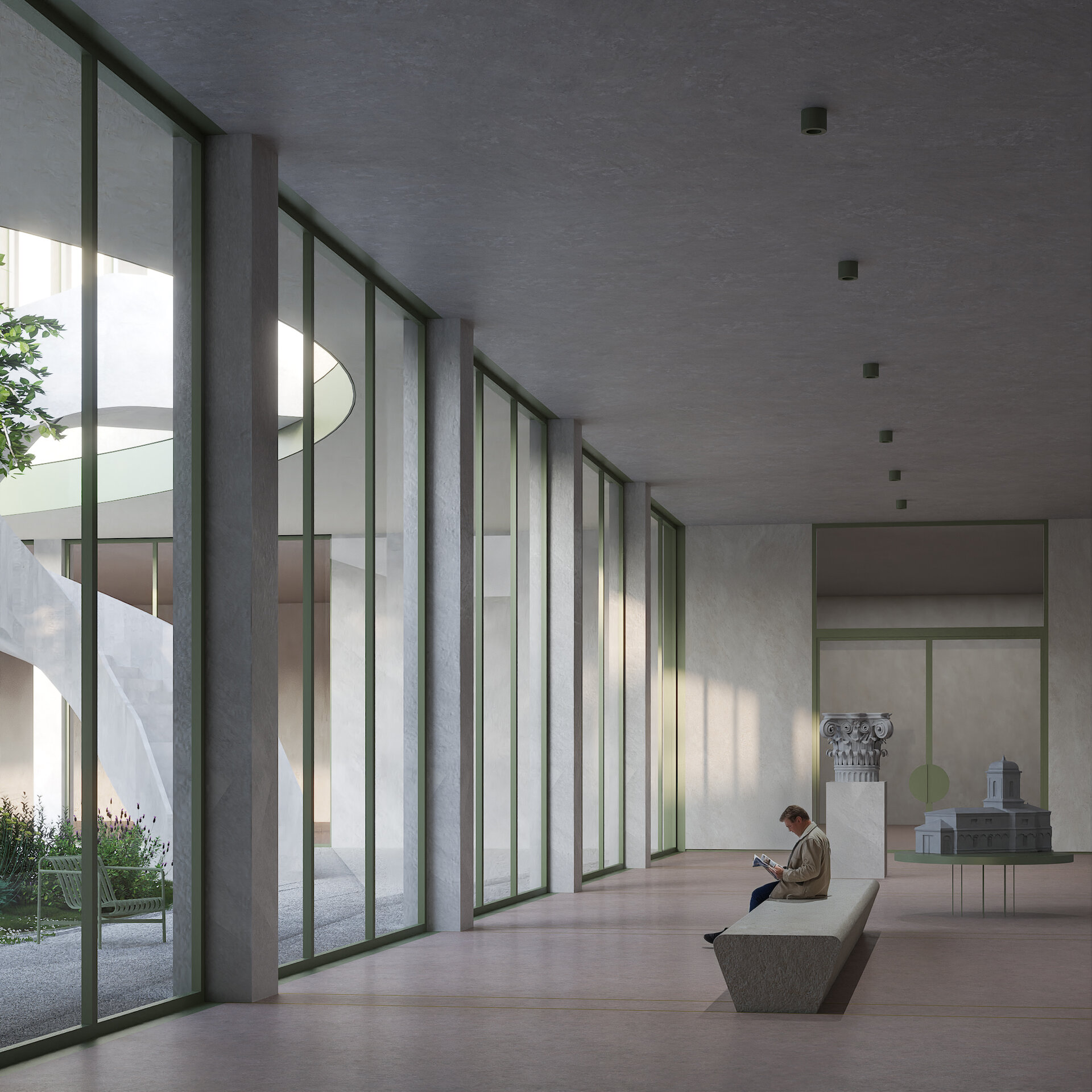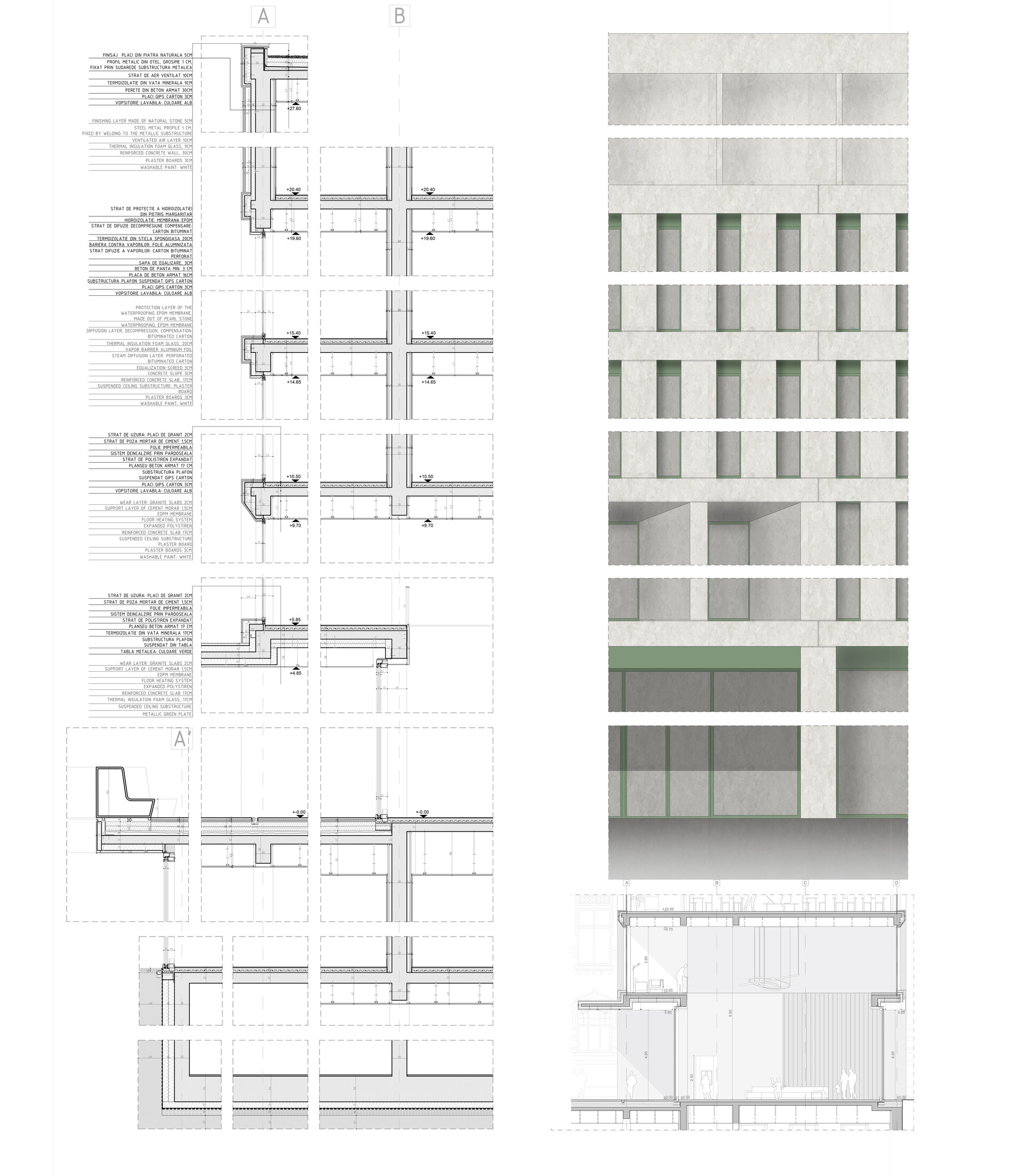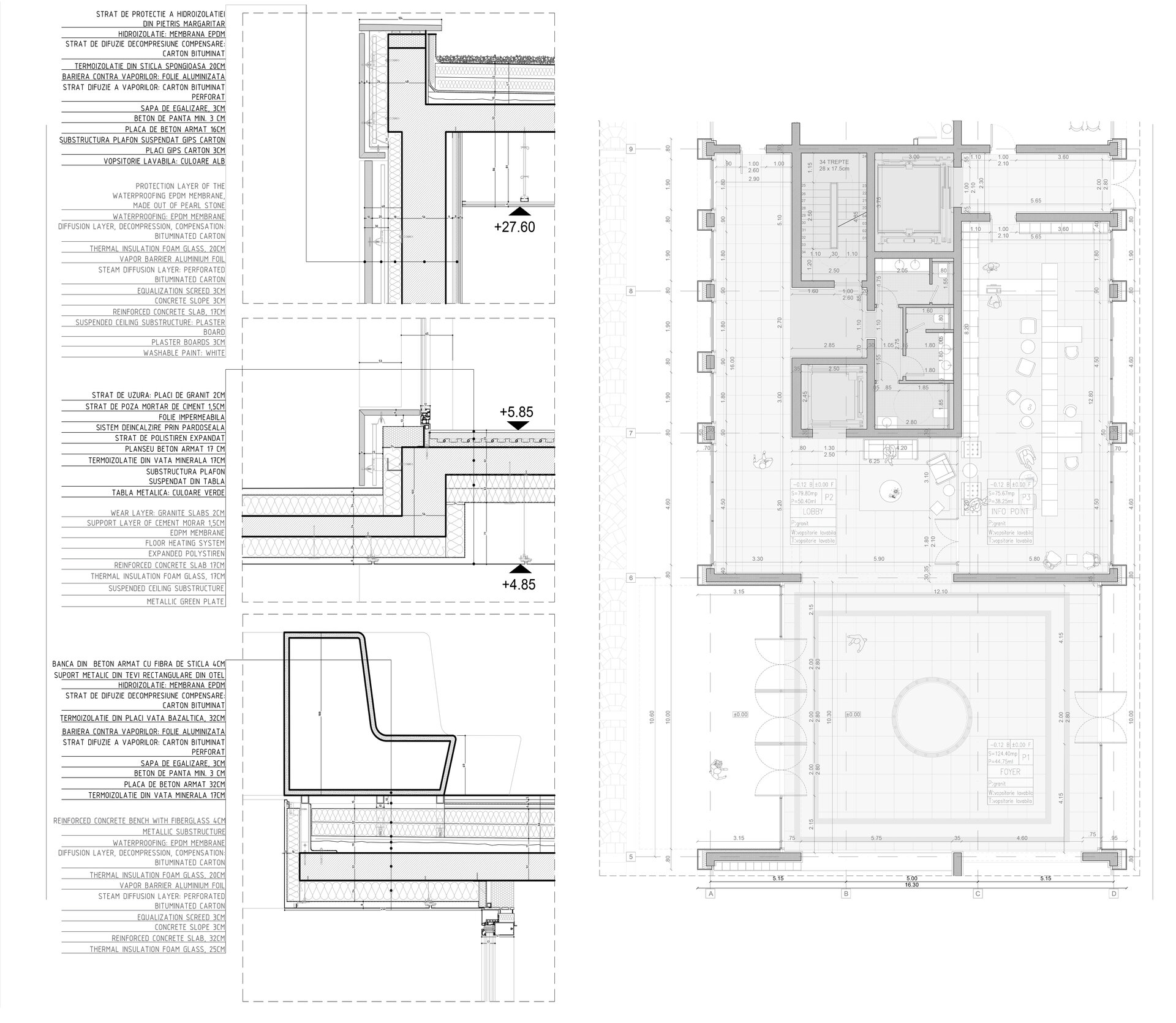
- Nomination for the “Research through Architecture / Architecture Diplomas” section
Lost Bucharest Museum
Authors’ Comment
Architecture is perhaps the place that shows us both its 'spongy' character in that it absorbs time to absorb history and also its ephemeral character in that it is easy to lose, but not the memories and memories that can hang in one's consciousness until forgotten. The loss of home is the immediate disaster after the loss of a family member. In present times, things tend to fall very quickly into the past, to disappear, which shows that the balance between the present and the past is disturbed. The builders and builders of architecture do not seek eternity through this, but the postponement of decay - a postponement of entropy.
The memory generated by architecture comes from two sources: on the one hand that created by the architectural object itself, built to memorize a vital component of the society that assimilates it, and on the other hand that which the edifice gradually accumulates, absorbing the time it passes through. The place where the memory takes place becomes the link between all its stages. The sites represent a palimpsest, an arrangement of consecutive layers that have been uncovered by the consecutive erasure of lost states. Thus, in this case, the "forgetting" is fertile because the space becomes "con-looked" by the "presence of the past states through which that site will have passed". Our concern should focus on preserving, in the process, the time they contain.
The particular case of Bucharest, in relation to the memory of its places, shows us what can cause an urban event to happen without the (un)will of the society that developed that city. The influences of major factors such as the economic or political environment have proved that transformations could still be dictated and not understood as needs. A city steeped in history harbors its memory in places and spaces unsuitable for their accumulation and display, forcing continuous adaptations for the storage and display of memory materials.
The project started from the idea of building a center to commemorate the Lost Bucharest. A Bucharest that only reveals itself to us through the archival images that bear witness to the destruction. The project proposes a Museum dedicated to the Lost Bucharest together with a city archive house to house the municipal library and the city's archive collections. All the memory of the existing and lost city in one place. Being located directly opposite the site of the traumatic event, it has an almost completely open skyline to the mutilated area, now enclosed behind the curtain of blocks. The place where until 30 years ago the Archives Monastery on Mihai Voda Hill was located is now a mere park.
The project aims to evoke absence and thus implies detachment from the present in order to bring the past to light. The intention was to generate an esplanade that would stop behind the town hall, that would emphasize its facade facing the Dâmbovița and allow it to connect with the river. In order to make this esplanade happen, the project developed underground by building two levels to house archive collections and the museum, together with the lapidarium, whose components are part of the destroyed buildings. The excavated courtyard allows vegetation to be planted and access is via a staircase attached to it. The new building rises in the extension of the eastern wing of the town hall, and the completion of the square comes through the placement of a bridge to enclose the contours of the urban pocket and link the museum to its most important exhibit, the town itself.
- Conversion and extension of the former Bourul Factory in Bucharest. Urban Hub for students
- Reimagining the Leonida Garages - Contemporary Cultural Space Bucharest
- Lost Bucharest Museum
- Recovery of Callimachi-Văcărescu ensemble. Cultural and touristic circuit at Mănești, Prahova
- Memorial Museum of Bucharest Pogrom
- ICA - Institute of Cinematographic Arts (in Timisoara)
- Landscape habitat: Extension and conversion of the former imperial baths of Herculane
- Constanța History and Archeology Museum the New Gallery
- Extension of the Independence Cinema with a Film and Media Faculty, Târgoviște
- Agricultural Research Center in Cluj
- City and Community - Youth Community Center on Dacia Boulevard, Bucharest
- “George Coșbuc” Flower Market - Rehabilitation and Expansion
- “Baba Novac” neighborhood center - Rehabilitation of the “Rucăr” commercial complex in Balta Albă, Bucharest
- Medresa, cultural center for Medgidia’s turkish-tatar community. Reintegrating the turkish bath into the urban circuit
- Workspaces for Creative Industries. Christo Gheorgief House
- Day-Care Centre. Nifon Mitropolitul House
- Archaeology Center in the Constanța Peninsula
- Tab. Socio-cultural Incubator. Conversion of the Bucovat Tannery, Dolj
- Community Center, Ferentari
- Art school for children
- Recomposing a lost urbanity. Cultural intervention in the Historical Center of Brăila, Romania
- Factory, School, Campus. Vocational School on the Abandoned Drajna Timber Factory Site, Măneciu County
- Interactive music center
- Catechesis center on Biserica Amzei street, Bucharest
- Center of creation and contemporary culture
- Cultural center - Extension of the “Radu Stanca” National Theater in Sibiu
- Bolta Florești - Community Ensemble
- Digital Fabrication Laboratories. Adaptive reuse of the “Ciocanul” Trade School, Bucharest
- The conversion of the chapel within the former noble estate of the Csávossy family, Bobda
- The house with ogives
- Cultural Forum in Brăila
- Sportul Studențesc Palaestra
- Forest of Arts - Cultural Center & Artist Residencies Timișoara
- Transformation and durability: Red Sand Fort, intervention in the Thames Estuary
- Danube waterfront reimagined. Restoration and conversion of the former shipyard of Drobeta-Turnu Severin, RO
- Revitalization of the Neculescu Inn
- Creative and Research Hub “Unfinished Section Studio”
- Vocational School in Brasov
- Extension of the Pomiculture Research and Development Centre in Băneasa, Bucharest
- Arts and Science Park, Splaiul Unirii Bd.162, Bucharest
- Behind the apartment blocks. Urban reweaving. The Theodor Sperantia Neighbourhood
- The House of the Romanian Academy - From Object to urban fabric
- Chisinau Museum of Modern and Contemporary Art

